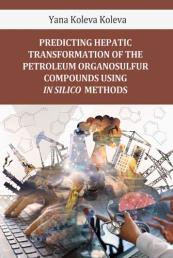Количка
Predicting Hepatic Transformations of the Petroleum Organosulfur Compounds Using In Silico Methods
Organosulfur compounds together with hydrocarbons are the main components found in a wide variety of commercial products (e.g., gasoline, fuel oils, lubricating oils, solvents, mineral spirits, mineral oils, and crude oil), and the amount of sulfur compounds determines the quality of the petroleum products. Because of widespread use, transportation, disposal, and spills, environmental contamination is relatively common. It is important to understand that petroleum products are complex mixtures, typically containing hundreds of compounds (hydrocarbons, organosulfur compounds etc). These include various amounts of aliphatic and aromatic compounds but toxic data are available for very few of the organosulfur compounds known in petroleum. Living matters are inadvertently exposed to the highly toxic petroleum hydrocarbon (containing sulfur compounds). Despite the fact that petroleum-related industry is globally thriving, the health hazard of most hydrocarbons (containing sulfur compounds) is not well characterized.
In the present study, twenty-two organosulfur compounds were selected to cover their maximum structural diversity. It is well known that some of them will cause environmental and health problems but they cannot be studied on a case by case basis because it is time consuming and cost prohibitive. Knowledge about metabolism is very important to understand the health risks posed by chemicals which has led to the development of in silico techniques for the prediction of xenobiotic metabolism. In Silico method (QSAR Toolbox) have been used to study their probable metabolism (in vivo and in vitro) in the liver. Depending on the chemical structure, some of the organosulfur compounds (parent structure) show reactivity to DNA and protein.
The possible hepatic activation of the organic sulfur compounds and the possible reactivity of the generated hepatic metabolites to DNA and protein were assessed using alternative (in silico) methods (QSAR Toolbox). Some of the generated hepatic metabolites can act as an electrophile (structural alert) to DNA and protein in different mechanistic domains. This shows that under certain conditions the basic structure and some of the generated metabolites can cause harmful health effects.
-------------







